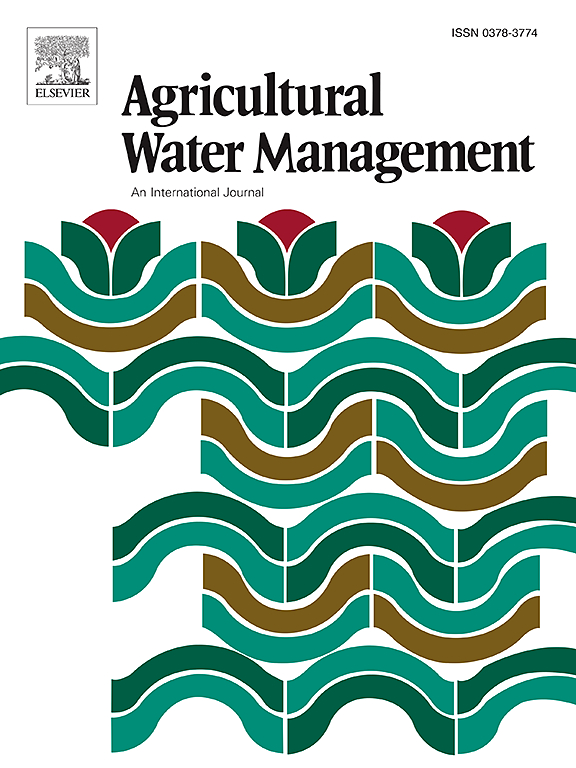Exploring the allometry between ear saturated water accumulation and dry mass for diagnosing winter wheat water status during the reproductive growth
IF 5.9
1区 农林科学
Q1 AGRONOMY
引用次数: 0
Abstract
The ear, which begins to form and develop during the reproductive growth phase, relies on maintaining a normal water status for its formation, grain filling, and overall yield. Accurate diagnosis of water status during the reproductive growth phase is imperative for achieving precision water management in winter wheat cultivation. Previous studies used the allometric relationship between plant dry mass (PDM) and plant saturated water accumulation (SWAP) to develop critical SWAP curves, which were employed to assess the water status of winter wheat and maize during their vegetative growth phase. However, it remains uncertain whether this method is applicable to the ear of winter wheat during its reproductive growth phase. The study focused on developing and validating a model to quantify the water status of winter wheat during reproductive growth phase by using critical ear saturated water accumulation (SWAE) curves and water diagnostic index (WDI) based on ear, and to analyze the effect of water-nitrogen interaction on it. Field experiments involving four water and two nitrogen treatments were conducted from 2019 to 2023 to determine the relationship between ear dry mass (EDM) and SWAE during the reproductive growth phase of winter wheat. The impact of water-nitrogen interaction on EDM-SWAE allometry was also analyzed. In addition, the ear WDI was defined as the ratio of the actual SWAE value to the critical SWAE value under the same EDM. The critical SWAE curves under nitrogen limited (N1) and non-nitrogen limited (N2) conditions were constructed (N1: SWAE = 3.53EDM0.48; N2: SWAE = 4.53EDM0.47). Nitrogen deficiency lowered the SWAE value at the same EDM, but it did not impact its accumulation rate. The indirect soil nitrogen deficiency, reduction of grain number per ear and early grain filling caused by drought were the three main factors leading to the decrease of ear WDI. The ear WDI effectively distinguishes varying degrees of water stress; however, it is essential to minimize errors resulting from its uncertainty before application. These findings will provide valuable insights into the water status of winter wheat under varying water and nitrogen conditions during the reproductive growth phase. Additionally, they will serve as a foundation for advancing future research on precise irrigation strategies.
求助全文
约1分钟内获得全文
求助全文
来源期刊

Agricultural Water Management
农林科学-农艺学
CiteScore
12.10
自引率
14.90%
发文量
648
审稿时长
4.9 months
期刊介绍:
Agricultural Water Management publishes papers of international significance relating to the science, economics, and policy of agricultural water management. In all cases, manuscripts must address implications and provide insight regarding agricultural water management.
 求助内容:
求助内容: 应助结果提醒方式:
应助结果提醒方式:


